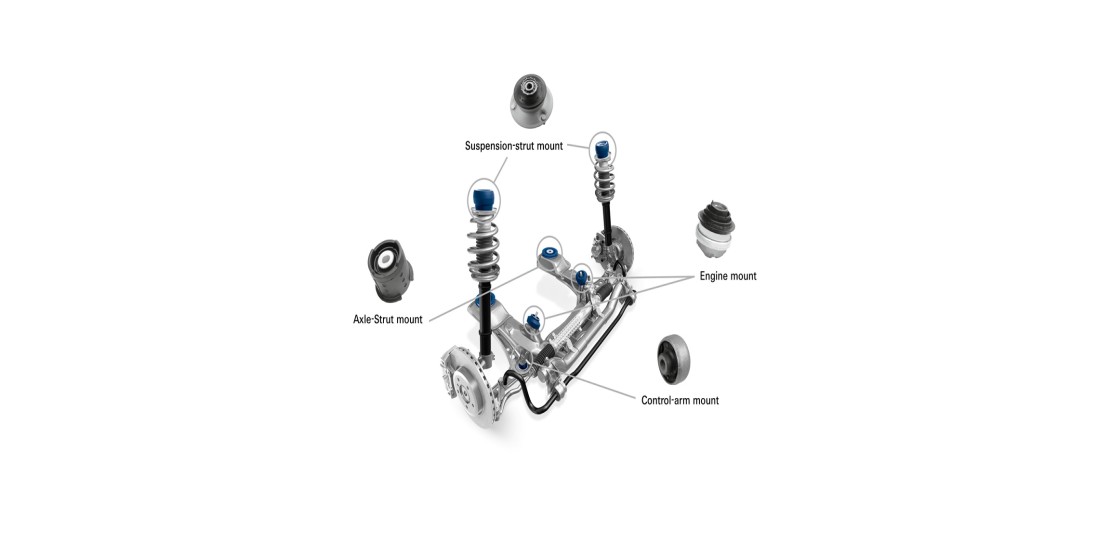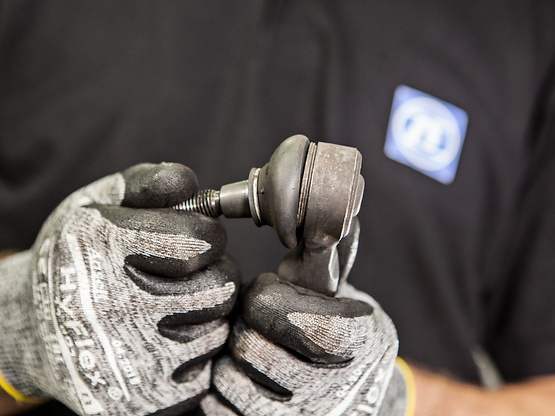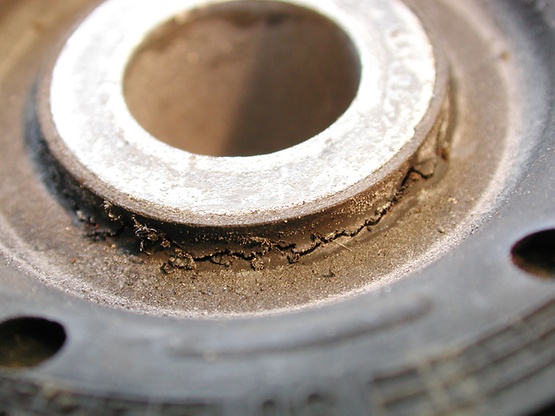
Rubber-to-metal components are subject to high dynamic stress and often also harmful environmental influences, such as heat, de-icing salt and ozone. We therefore recommend a regular check of these components within the context of the inspection or during work on the brakes or tires.
How-to-guide
Rubber-to-metal components in a car chassis dampen undesirable vibrations and noise. Depending on the rubber metal mount model and manufacturer, up to twelve different rubber-to-metal components may be installed. For instance in their function as suspension strut mounts, subframe bearings, link mounts, stabilizer mounts or axle beam mounts, they provide more comfort and better driving safety. In addition to the standard mounts, hydraulic rubber-to-metal components are also used in the form of axle housing mounts or link mounts. In these cases, additional liquid damping compensates the vibrations.

ZF Aftermarket recommends regular checks. Rubber-to-metal components are ideally tested during inspections and technical monitoring tests as well as during brake repairs or tire changes.
A visual inspection for cracks, metal flaking or fluid leakage on hydraulic mounts helps to diagnose whether any rubber-to-metal components are defective and, if so, which ones.
In the case of suspension strut mounts, the workshop may also examine the "setting behavior" of the suspicious rubber-to-metal component after having removed it: The difference in height between an old and a new bearing should not exceed two to three millimeters. Furthermore, the rubber must not show any folds or cracks and must not have detached from the metal. In the case of hydraulic rubber-to-metal components, attention must also be paid when it comes to liquid leakage.

Although rubber-to-metal components do not belong to the typical wear parts, they are subject to high dynamic stress and harmful environmental influences such as heat, de-icing salt and ozone, due to their complex tasks. This can lead to fatigue symptoms. If link mounts or axle bearings cease to work flawlessly, rattling, squeaking, and knocking may occur when driving over short road unevenness. Further indicators: wobbling of the steering wheel or "juddering" brakes. Damaged suspension strut mounts may increase the stopping distance, lead to spongy driving behavior or make the steering heavy.
Damaged rubber-to-metal components within the chassis not only affect safety and comfort; they can also have a negative impact on adjacent chassis components.
If a defect has been detected, the bearings should always be replaced immediately and in pairs if possible.
The installation and removal of these high-quality components require suitable tools and, in some cases, also special tools.
Caution: In some cases, the installation position must be strictly adhered to.
The installation position must be marked prior to removing the defective bearings. In some cases, the positioning marks are on the actual parts or they are on the installation location in order to permit the exact mounting of the new bearing.
Oil may not be used as an assembly aid when dealing with rubber-to-metal components as it attacks the rubber and damages the part as a result. Experts recommend using a soap solution. When dealing with link mounts and suspension strut mounts, only securely tighten the clamping screws with the required torque once the vehicle is in its assembly position once again. This prevents distortions in the bearing that could lead to premature wear of the new parts.
ZF Aftermarket product range
Discover the complete portfolio in our product catalog.


